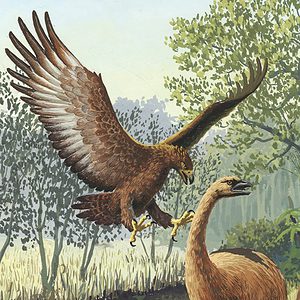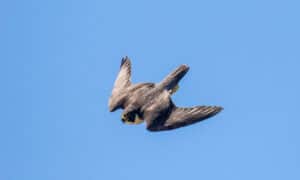The American crow (Corvus brachyrhynchos) is a large, shiny black corvid species native to North America. It is one of the most common and widespread birds across its range, which spans from the southern half of Canada through nearly the entire United States and into northern Mexico. As with other corvids, they are known to be highly intelligent and social creatures. They also have a particularly strong and multigenerational family dynamic. Read on to find out more about the lives of baby crows!
1. For American Crows, It’s All About Family.
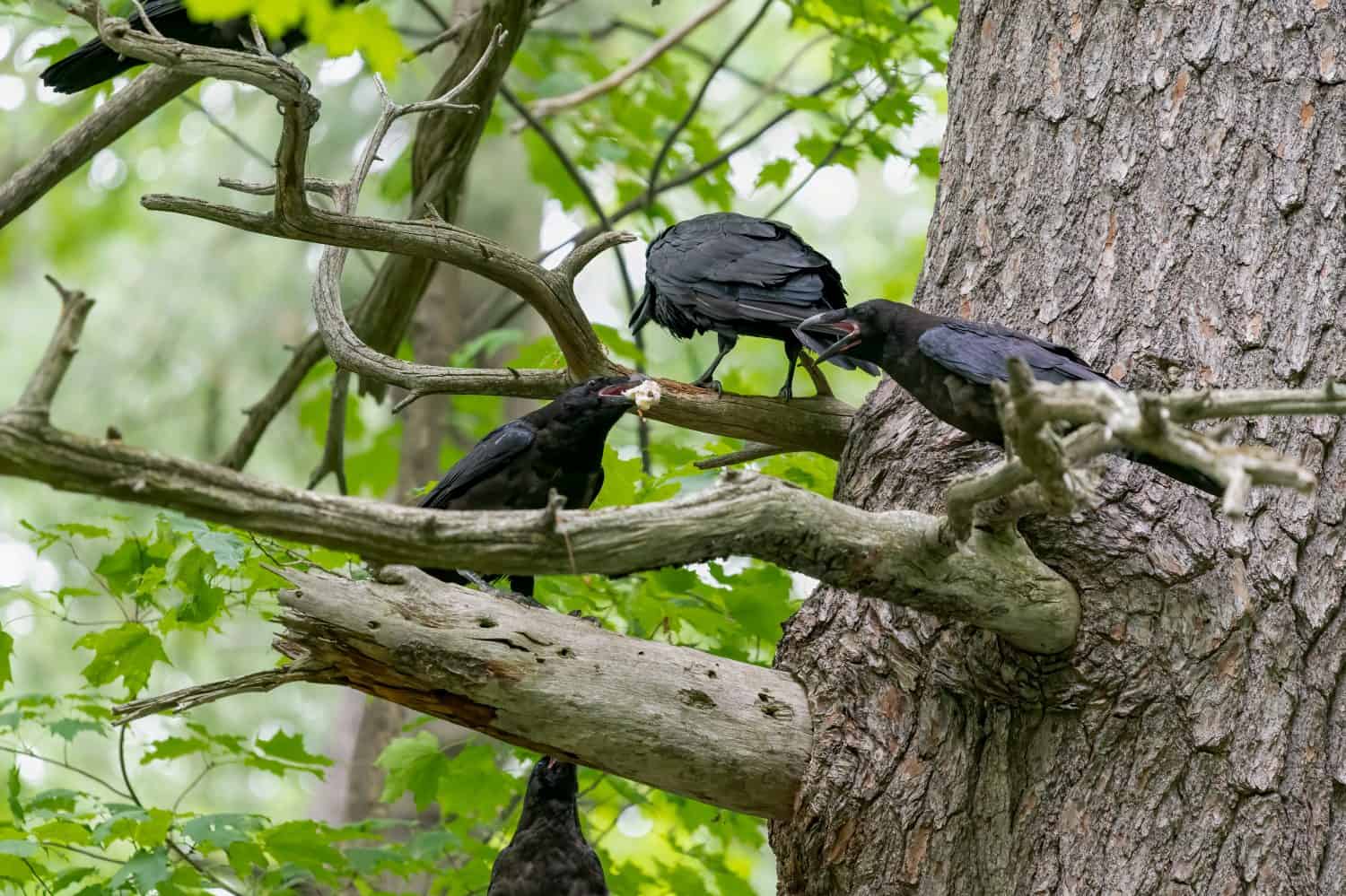
American crow families eat and play together.
©Karen Hogan/Shutterstock.com
American crows are what are known as monogamous cooperative breeders. They live in family groups of up to 15 individuals, with a main breeding pair (mom and dad) and offspring from previous seasons. Older siblings help their parents raise younger siblings for at least two years and may stay for up to five years before leaving to start their own families.
2. American Crows Usually Raise Just One Brood Per Season.
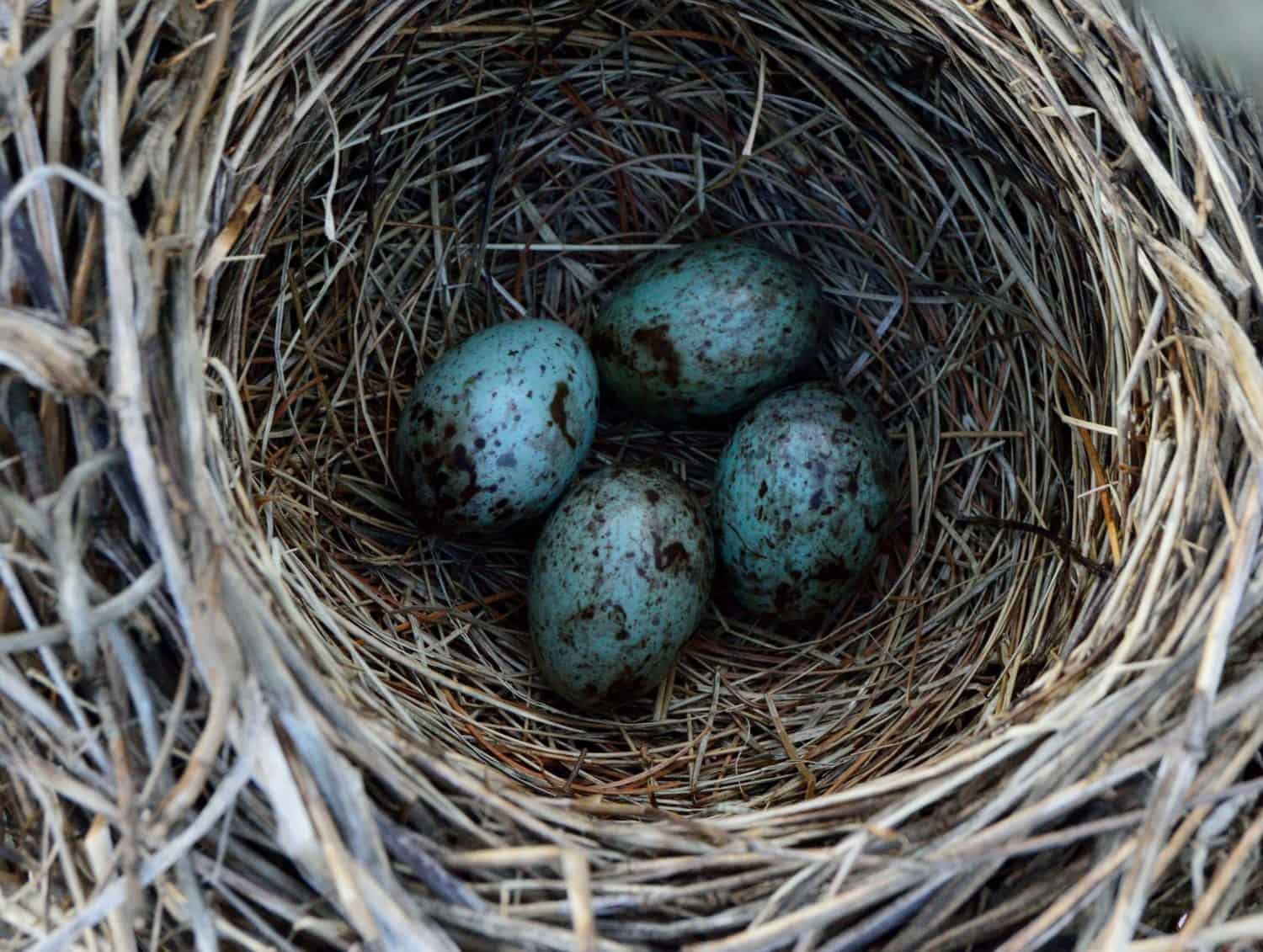
The eggs of American crows are pale blue-green to olive green with brown and gray blotches, with a length of 1.4-1.9 in (3.6-4.7 cm) and a width of 1.0-1.2 in (2.6-3.1 cm).
©No-7/Shutterstock.com
American crows usually nest high up in trees, preferring evergreens when available. Stick nests are built by both mom and dad, with older siblings sometimes helping. Mom lays anywhere from 3 – 9 eggs (average 4 – 6), which she then incubates for 16 – 18 days. Generally, only one brood is raised per season. However, if a nest is lost early in the season, there may be a second nesting attempt.
3. Newborn Crows Are Totally Helpless.
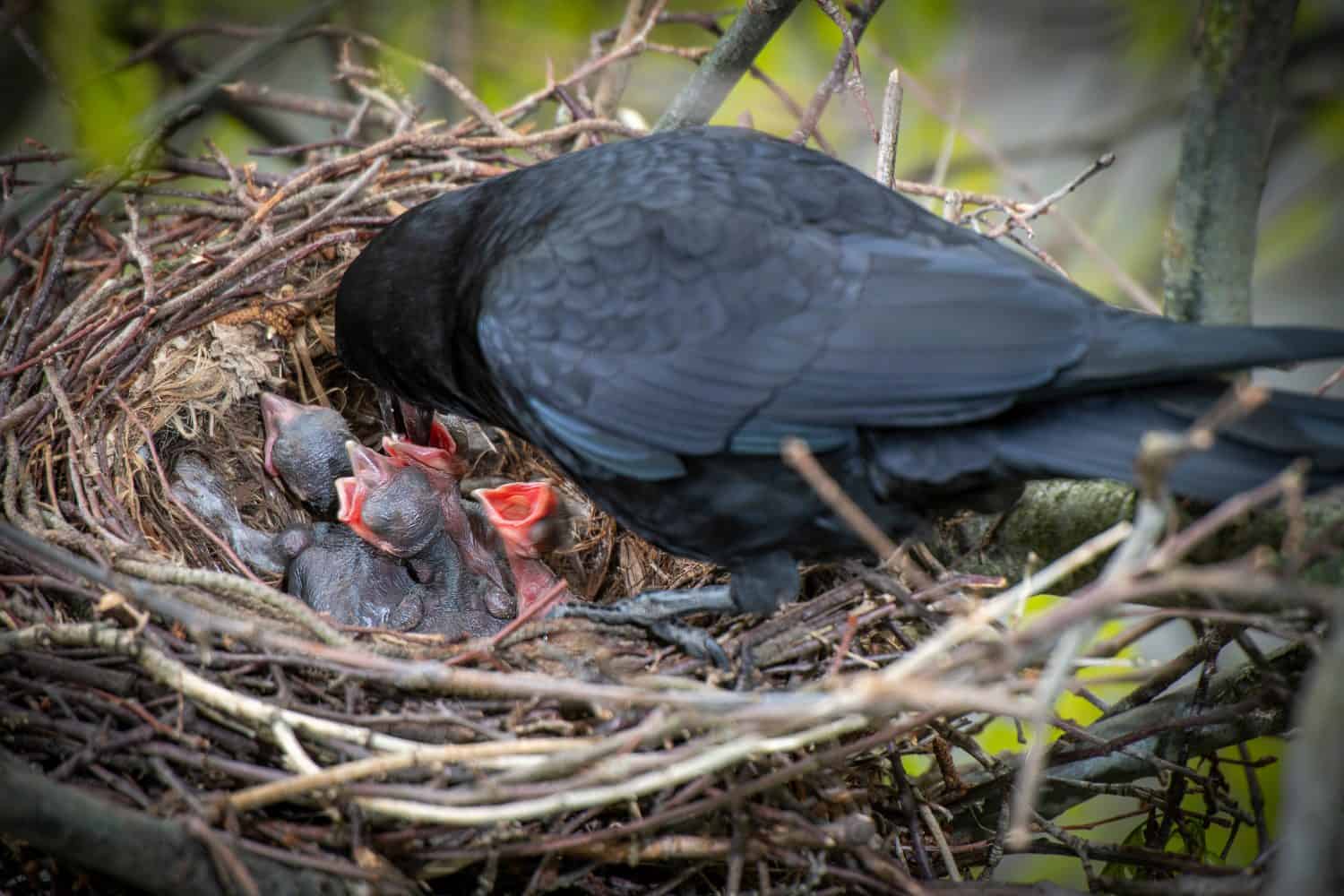
Insects and other arthropods make up the bulk of the young nestlings’ diet.
©KrisDurlen/Shutterstock.com
American crow chicks are born altricial. That is, they are mostly naked with just a tiny bit of down, their eyes are closed, and they cannot leave the nest. They are thus entirely dependent on their mom to keep them warm and feed them. Dad and older siblings will bring both mom and the chicks food at first since mom must stay with these helpless chicks all the time. Eventually, however, mom will be able to leave them for short periods to join in the food gathering.
4. Fledging Crows Still Need Lots of Care.
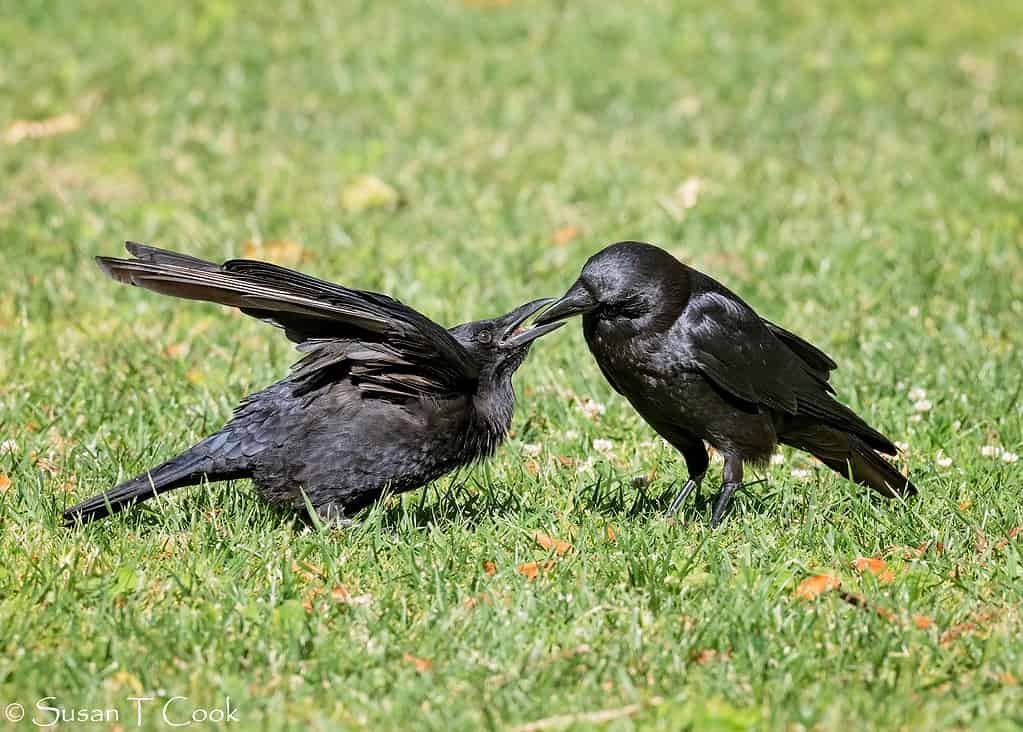
Like many other fledgling birds, young crows still get food from their parents.
©Channel City Camera Club from Santa Barbara, US / CC BY 2.0 – License
Nestlings become fledglings after about 20 – 40 days once their first set of flight feathers has grown in. However, even after leaving the nest, they continue to receive lots of care from the family as they learn how to fly and feed themselves better. Even after becoming fully independent in these tasks, of course, they will still stay with their family for at least the next year, and usually at least three, to help care for their younger siblings just as their older siblings did them!
5. The Eye Color of Young American Crows Changes During Their First Year of Life.
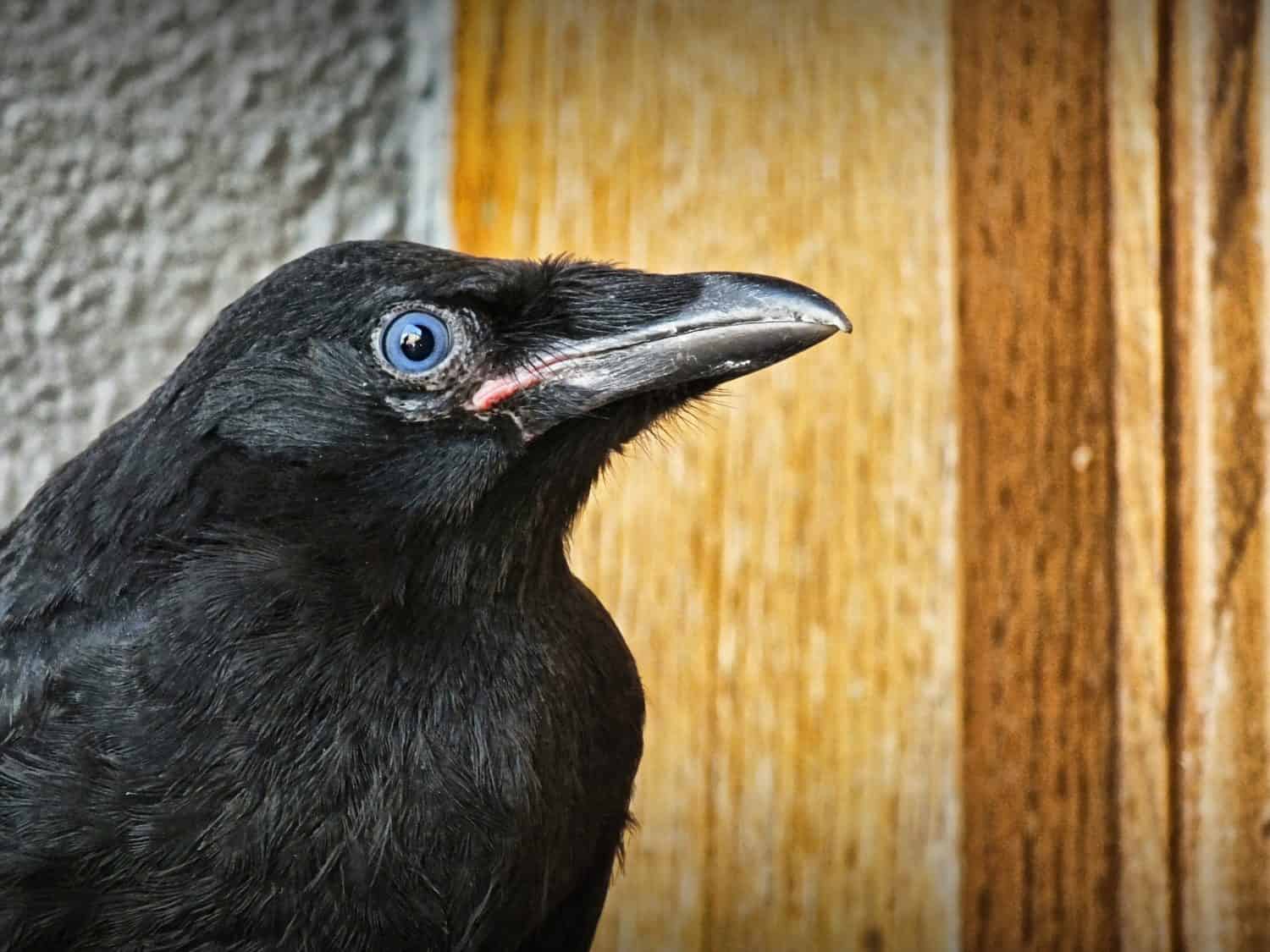
An American crow’s big blue eyes give it away as being still just a baby!
©Webb Photography/Shutterstock.com
While hatchlings are born with closed eyes, once open, they are revealed to be vivid blue (sometimes appearing steel gray). These baby blues will gradually transition to darker gray and finally dark brown as they mature during their first year.
6. American Crows Can Live Over 17 Years in the Wild…And Even Longer in Captivity.
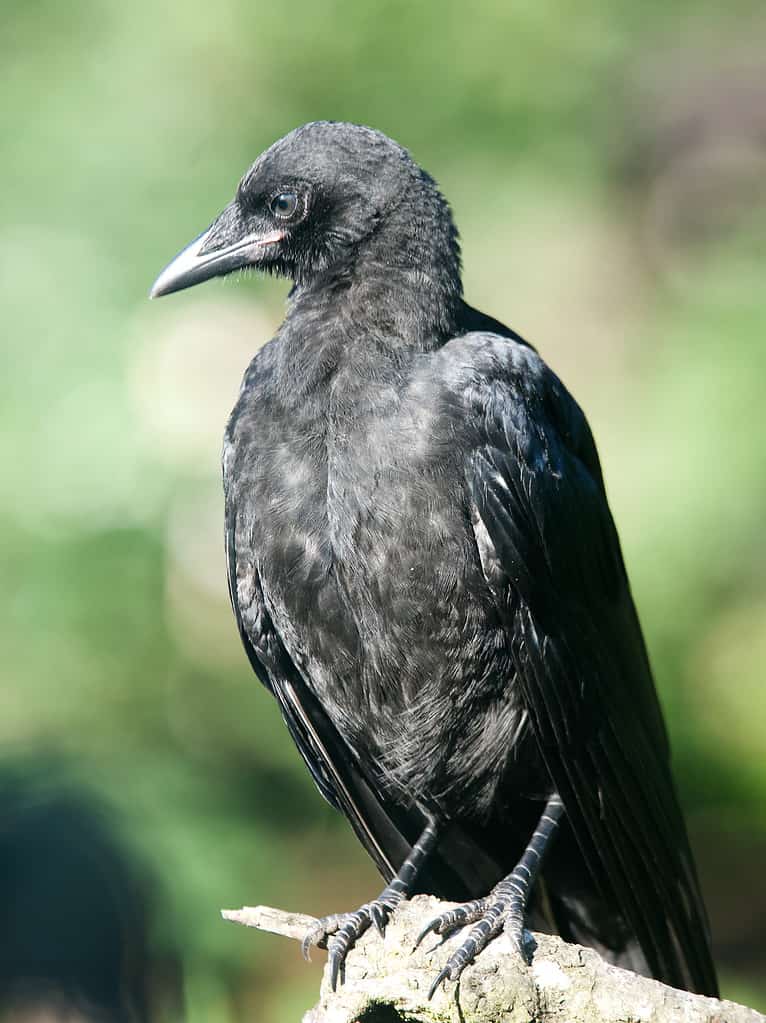
This handsome juvenile is about two months old.
©Colin Durfee via Flickr / CC-BY-2.0 – License
Nobody knows for sure how long American crows can live in the wild. Experts cite the average wild lifespan as 7 – 8 years; however, the oldest recorded bird was over 17 years old, and there are unconfirmed reports of wild birds living to at least 30. Captive crows have also been known to hit 30, with one pet crow having lived to a remarkable 59 years!
Conclusion
American crows are monogamous cooperative breeders. They live in family groups consisting of a mother, father, and siblings from multiple seasons. The family works together to raise a brood of chicks every season. Hatchlings are born altricial, utterly dependent on their mother and the rest of the family for food and protection. Once they are old enough to fledge, their parents and older siblings will continue to care for them until it is their turn to become the older siblings for the next generation. Young crows have blue eyes, which gradually change from gray to brown as they grow up. This species probably lives an average of 7 – 8 years in the wild, with a record 17+ years. Captive crows may live 30 years or more, with the current record 59 years.
The photo featured at the top of this post is © Moisieiev Igor/Shutterstock.com
Thank you for reading! Have some feedback for us? Contact the AZ Animals editorial team.




